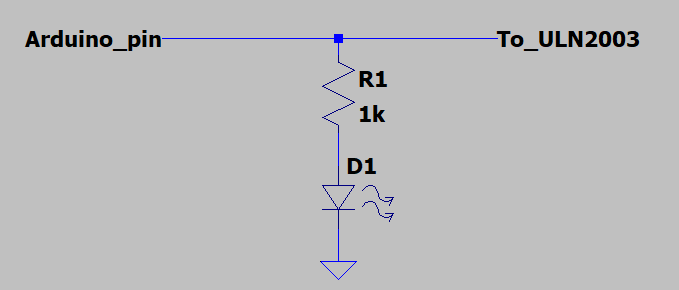Hi all!
In all examples I can find on internet, every one use a resistor together with a switch.
I would like to know why?
On this page for example: Multiple Limit Switches Problem
First:
Why not just use ground+digital input?
Second:
If I want to have a tiny led indication together with a input how would I do that? Connect?
(I don't want any logic behind the led, only if a input is active or not(if a switch is on or off))
Third:
If I want to have the I/O as a output to a ULN2003A and want to have a led that indicates if a Output is on or off how would I connect that, and why?
Forth:
Can you use the voltage that comes from Arduino output or input, or must I use 5V? (Like in many exampels)
I am making planes for a PCB I am constructing, and want to use Arduino Mega or Pokeys 57E,U or Leobodnar BBI-64 Button Box Interface as Input device for switches.
Also I want to use Arduino Mega or Pokeys 57E,U as Output, together with ULN2003A that will control Leds, Relays and Light Bulbs.
I will construkt "Shields" for Arduino, Pokeys and Leobodnar, so you can decide what input device you want or output device.
And reason for the questions is that I wan't led indication bothe for inputs and outputs on my PCB.
Links:
Pokeys is much like Arduino
Pokeys Manual
LeoBodnar is smal an easy to connect.
LeoBodnar BBI-64 Button Box Interface
If someone could direct me to a explanation and or diagram of these things it would be nice!
Best regards Jacob





